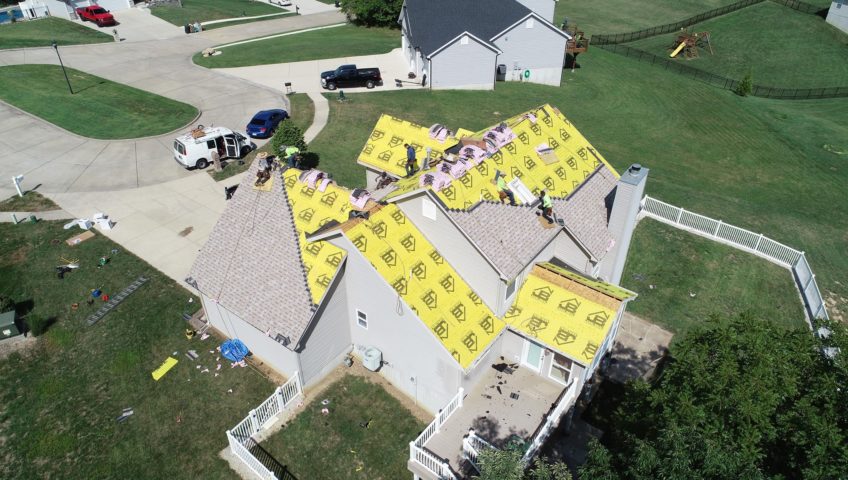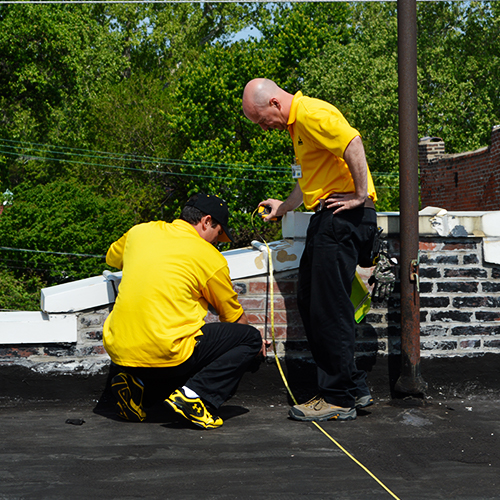When it comes to maintaining the integrity and aesthetic appeal of your home, understanding the various elements of your roof is crucial. One such often-overlooked yet vital component is the roofing fascia.
We’ll delve into what roofing fascia is, its importance in the broader roofing system, and where it fits into the structure of your home. We will also offer a comprehensive guide to installing roofing fascia, highlighting best practices to ensure your home is well-protected and looking its best.
Whether you’re a DIY enthusiast or simply a homeowner looking to learn more about your property’s roofing system, this guide to understanding and installing roofing fascia will provide valuable insights and practical tips.
What is Roofing Fascia?
Roofing fascia is a key part of any home’s roofing system, playing both an aesthetic and functional role. But what is it exactly?
Fascia is the long, straight board that runs along the lower edge of the roof, attached to the ends of the rafters or trusses. This component serves as the primary barrier between the outside elements and your roof’s wooden structure, protecting it from weather damage. In addition, the fascia provides a smooth, even appearance to the edge of the roof, enhancing your home’s curb appeal.
Fascia boards are typically made from a variety of materials such as wood, vinyl, or aluminum, each with its own benefits. Wood is often favored for its classic look, while vinyl and aluminum offer durability and low maintenance. Choosing the right material for your roofing fascia is essential to ensure long-lasting protection and match the aesthetic of your home.
The Importance of Roofing Fascia
The importance of roofing fascia cannot be understated. Not only does it add a finished look to your home’s exterior, but it also provides vital protective functions.
The fascia board serves as a barrier against weather elements, preventing water and debris from entering the roofing system and causing damage. It’s particularly effective during heavy rainfall, as it helps guide the water into the gutters and away from the roof.
But the fascia doesn’t work alone—it collaborates with other parts of your roof, like soffits and gutters, to ensure your roofing system functions effectively. The soffits, for instance, provide ventilation to the attic and roof, preventing moisture buildup, while the gutters control water runoff. Without fascia, these components wouldn’t have a point of attachment.
In essence, the roofing fascia is a crucial player in preserving the longevity of your roof and maintaining the aesthetic appeal of your home.
Where Does Roofing Fascia Go On Your Home?
In understanding the structure of your home, it’s crucial to know exactly where the roofing fascia is located. The fascia board is installed along the lower edge of the roof, acting as a trim between the roof line and the outdoors.
To visualize it, consider the part of your house that gutters are typically attached to—that’s your fascia. It runs horizontally under the roof line, wrapping around your house and providing a smooth, even appearance.
This part of the roof meets the outdoors directly and plays a significant role in your home’s exterior design. It’s also the last line of defense against weather, particularly for your roof’s wooden elements.
Imagine a cross-section of your roof edge, from the shingles to the interior attic space—you’ll see the fascia as the vertical finishing edge at the end of the rafters, right before the open air begins. Remember, a well-maintained fascia not only enhances your home’s curb appeal but also fortifies your roofing system against potential damage.
Best Practices for Installing Roofing Fascia
Proper installation of roofing fascia is key to ensuring its functionality and longevity. To begin, gather the necessary tools and materials. You’ll need new fascia boards, nails or screws, a hammer or drill, a saw, a level, and safety gear such as gloves and safety glasses.
Before you start, ensure the area is well-prepared. This may involve removing old fascia boards and inspecting the edge of your roof for any damage or rot. It’s important to address any underlying issues prior to installing new fascia to ensure a seamless and secure fit.
Once the area is prepared, you can begin the installation. Start by measuring the length of the area where the fascia will be installed. Cut your fascia board to the appropriate length, ensuring a clean cut for the best fit. Next, align the fascia board with the edge of the roof ensuring it’s level, and secure it with nails or screws at each rafter.
Safety should be your top priority throughout this process. Always use caution when working at heights and ensure your ladder is stable before you climb.
Consider having a partner assist with holding the ladder and handing up tools and materials to ensure a smoother, safer process. And remember, if the job seems too complex or dangerous, don’t hesitate to call a professional roofing contractor. Ensuring your fascia is properly installed is essential for the overall integrity of your roofing system. So if you have any doubt at all, a trained professional might be the way to go.
When to Seek Professional Help
Installing roofing fascia may seem like a straightforward task, but there are situations where it’s best to enlist the expertise of a professional roofing contractor. For instance, if your roof has a complex structure such as the fascia boards being particularly high or difficult to access, or if there’s extensive damage or rot that needs addressing, a professional roofer can ensure the job is done correctly and safely.
Hiring a roofing contractor offers numerous benefits. First, their extensive experience and knowledge enable them to efficiently handle any challenges that may arise during the installation process. They also have the right tools and equipment to perform the job safely and to a high standard. Additionally, many roofing contractors offer warranty coverage for their work, providing you with peace of mind that if anything goes wrong with the fascia in the future, it will be covered.
Remember, while DIY projects can be rewarding, it’s important to recognize when a job requires professional expertise. Investing in professional fascia installation can save you time, prevent potential mishaps, and ensure the longevity and effectiveness of your roofing system.
Now’s The Time To Take Action
Roofing fascia plays a critical role in the structure and protection of your home. Not only does it enhance the aesthetic appeal of your home, but it also safeguards it from weather damage by working in unison with other parts of the roofing system. Understanding what fascia is, where it goes on your home, and the best practices for its installation can go a long way in maintaining the longevity of your home.
While some minor maintenance and repair tasks can be tackled as DIY projects, it’s crucial to recognize when professional help is needed. A professional roofing contractor has the experience, knowledge, and tools to ensure that your roofing fascia is installed correctly and efficiently, with a warranty for added peace of mind.
As you consider the health and maintenance of your home’s exterior, remember the importance of your roofing fascia. If you have any concerns or need assistance with fascia installation or maintenance, don’t hesitate to reach out to a professional roofing service like John Beal Roofing. We can provide you with the expertise and services necessary to keep your home looking great and standing strong for years to come.



 Is this an insurance claim? Missouri and Illinois both have strict laws that do not allow a
Is this an insurance claim? Missouri and Illinois both have strict laws that do not allow a